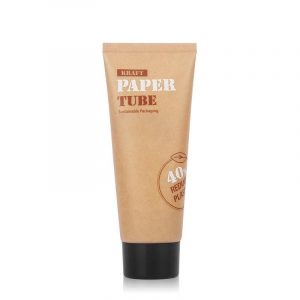
Cómo imprimir en frascos de cosméticos
Content Menu
● Beyond the Label: A Guide to Printing on Cosmetic Bottles and Elevate Your Brand
>> The Importance of Cosmetic Bottle Printing
>> Understanding Printing Techniques
● Considerations for Printing on Cosmetic Bottles
● How to Print on Cosmetic Bottles: A Step-by-Step Guide
● Beyond the Basics: Elevating Your Cosmetic Bottle Prints
Beyond the Label: A Guide to Printing on Cosmetic Bottles and Elevate Your Brand
In the competitive world of cosmetics, standing out from the crowd is essential. While product quality and efficacy play a crucial role, packaging often acts as the initial point of contact, influencing consumer perception and brand loyalty. Beyond simply containing the product, cosmetic bottles present a unique canvas for creativity, allowing brands to convey their identity, communicate product benefits, and captivate potential customers. This article explores the exciting world of printing on cosmetic bottles, delving into different techniques, their advantages, and considerations for creating visually appealing and functional packaging.
The Importance of Cosmetic Bottle Printing
Printing on cosmetic bottles serves a multitude of purposes, beyond mere aesthetics. It allows brands to:
-
Communicate Brand Identity: Unique designs, color palettes, and fonts effectively convey a brand’s personality, values, and target audience.
-
Highlight Product Features: Printing allows for clear and concise communication of key product benefits, ingredients, and usage instructions.
-
Enhance Shelf Appeal: Visually striking designs and high-quality printing can attract attention and differentiate a product on crowded shelves.
-
Foster Consumer Engagement: Intriguing designs and interactive elements like QR codes can encourage consumers to learn more about the brand and product.
Understanding Printing Techniques
The world of cosmetic bottle printing encompasses a variety of techniques, each offering unique advantages and considerations. Here’s a breakdown of popular methods:
-
Process: A stencil is created on a mesh screen, allowing ink to pass through onto the bottle’s surface. This technique is known for its versatility and ability to handle thick inks, making it ideal for bold designs and high-coverage prints.
-
Advantages: Cost-effective, suitable for high-volume production, excellent color vibrancy, and can be used on various bottle materials.
-
Considerations: Limited detail capabilities, not suitable for complex graphics or intricate designs.

2. Offset Printing
-
Process: Ink is transferred from an inked plate to a rubber blanket and then onto the bottle surface. This technique is known for its high-quality results, sharp details, and ability to reproduce intricate designs.
-
Advantages: Produces high-resolution prints, ideal for intricate graphics and detailed text, allows for multiple colors in one pass, and can handle large print runs.
-
Considerations: High initial setup costs, may not be suitable for small-scale productions.

3. Digital Printing
-
Process: Ink is applied directly to the bottle surface using a digital print head. This technique offers versatility, speed, and the ability to customize prints with variable data.
-
Advantages: Versatile for both small and large runs, allows for personalized prints, quick turnaround times, and high-quality results.
-
Considerations: May have limitations in terms of ink thickness and coverage compared to traditional methods.
4. Flexographic Printing
-
Process: This technique utilizes flexible printing plates made from photopolymer or rubber, allowing for printing on a variety of materials, including flexible plastic bottles. It is known for its high speed and adaptability to curved surfaces.
-
Advantages: High-speed printing, suitable for large print runs, cost-effective, and can handle complex designs.
-
Considerations: May have limited color options compared to other techniques.
5. Hot Foil Stamping
-
Process: This technique utilizes heat and pressure to transfer metallic foil onto the bottle surface. It adds a luxurious and sophisticated touch to packaging, creating a unique and eye-catching effect.
-
Advantages: Creates a high-quality finish, adds a touch of elegance and premium appeal, and is ideal for logo or brand name applications.
-
Considerations: Can be more expensive than other techniques, and may be limited to specific foil colors.

Considerations for Printing on Cosmetic Bottles
When choosing a printing method, several factors need to be considered:
-
Bottle Material: Different materials, like glass, plastic, or metal, require specific printing methods.
-
Design Complexity: Intricate designs may require offset or digital printing, while simpler designs can be achieved with screen printing.
-
Color Palette: The number of colors and ink thickness can affect the chosen method.
-
Production Volume: Large-scale production may favor offset or flexographic printing, while smaller runs can be handled efficiently by digital or screen printing.
-
Budget: Different printing techniques have varying costs, ranging from budget-friendly screen printing to more expensive options like offset printing.
How to Print on Cosmetic Bottles: A Step-by-Step Guide
Here’s a simplified guide to printing on cosmetic bottles:
-
Design Development: Work with a graphic designer to create a visually appealing and functional design that aligns with your brand identity and product features.
-
Choose Your Printing Technique: Consider factors like bottle material, design complexity, volume, and budget to determine the most suitable method.
-
Prepare Your Bottles: Ensure the bottles are clean and free of any contaminants before printing.
-
Print the Design: The printing process will be handled by a professional printing service.
-
Quality Control: Inspect the printed bottles for any flaws or defects, ensuring consistent quality.
-
Packaging and Shipping: Store the printed bottles in a safe and clean environment before packaging and shipping to your customers.
Beyond the Basics: Elevating Your Cosmetic Bottle Prints
To further elevate your cosmetic bottle prints, consider incorporating these techniques:
-
Embossing and Debossing: Add tactile dimension to your designs by creating raised or recessed elements, enhancing the visual appeal and creating a luxurious feel.
-
Special Finishes: Gloss, matte, or textured finishes can add visual depth and sophistication to your prints.
-
Variable Data Printing: Personalize your bottles with unique codes, names, or messages, creating a unique experience for each customer.
-
Sustainability: Consider using eco-friendly inks and printing on recycled or recyclable materials.
Conclusion
Printing on cosmetic bottles is more than just decoration; it’s a strategic tool for brand building, product differentiation, and engaging with consumers. By understanding different printing techniques, their advantages, and considerations, brands can create packaging that stands out, communicates their message, and elevates their products. With a focus on design, quality, and sustainability, brands can use cosmetic bottle printing to not only present their products but also create a lasting impression on their customers.
